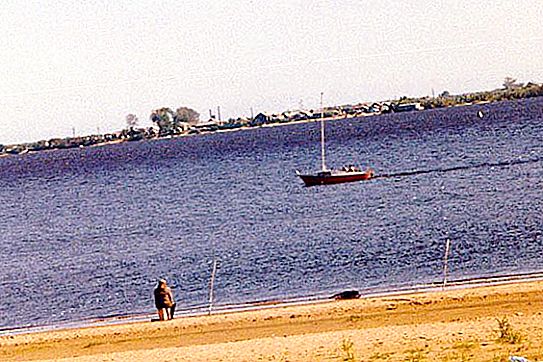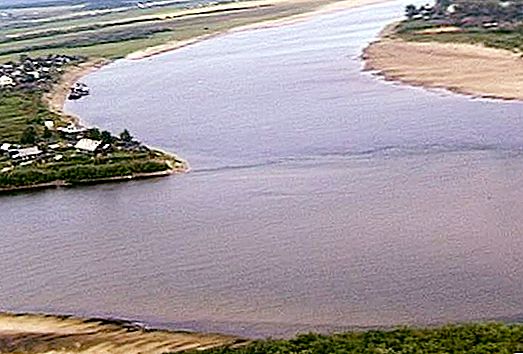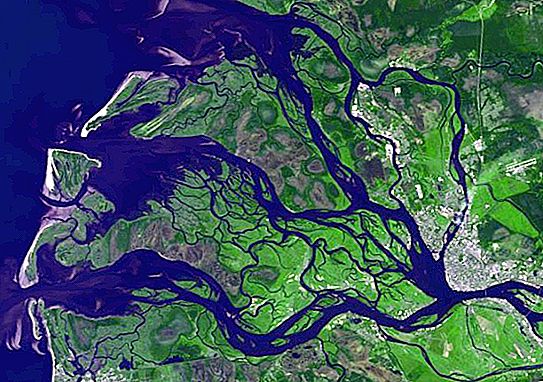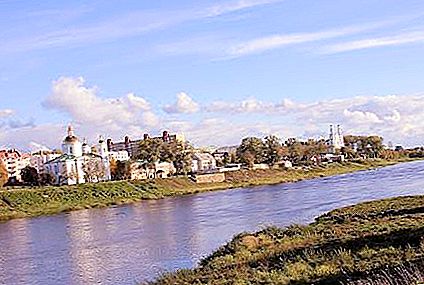The Northern Dvina River is the most important waterway of the Russian North. Where does it originate, where does it flow and into which sea flows? You will find answers to all these questions in this information article.
General characteristics of the Northern Dvina River
With a length of 744 kilometers, the river collects its waters from a huge area, which is 357 thousand square kilometers. Administratively, this is the Arkhangelsk and Vologda regions of Russia. And taking into account the Sukhon and Vychegda rivers, the length of this water artery will reach 1800 kilometers!
The Severnaya Dvina River takes on its way a large number of other rivers, streams and waterways. Hydrographs counted only about a hundred second-order tributaries of this river system. That is, these are streams that flow directly into the Northern Dvina. Among them, the largest tributaries are: Vaga, Vychegda, Pinega and Yumizh.
On the shores of the Northern Dvina there are seven Russian cities. This (in the direction from source to mouth): Veliky Ustyug, Krasavino, Kotlas, Solvychegodsk, Novodvinsk, Arkhangelsk and Severodvinsk.
Features of the water regime
The Severnaya Dvina river has a traditional water regime for northern rivers. The food is predominantly with thawed snow; the maximum water discharge is observed in May and in June (up to 15, 000 m 3 / s).
The river begins to be covered with ice at the end of October, and opens approximately in mid-April. Thus, the Northern Dvina "in the ice" stays for almost half the year. It is worth noting that the period of ice drift on the river is, as a rule, very active. Quite often, congestion occurs.
Etymology of a Place Name
Why was the Northern Dvina named that way? Researchers and historians have several interpretations on this subject, but they all come down to about the same thing. They decipher this hydrotoponym as "double river". This interpretation is given in their books by several authors at once. The fact is that the Severnaya Dvina river was formed as a result of the merger of two other water arteries, so a similar etymology is quite logical and justified.
It is worth noting that some researchers (in particular A. Matveev) saw the Baltic roots in the origin of this name. So, Matveev believes that this toponym comes from the Lithuanian word "dvynai", which means "double" in translation.

Interestingly, the Northern Dvina is reflected in many literary works and poetry. So, for example, a fictional city in one of Kira Bulychev’s novels is located on the fictional river Gus, which carries its waters to the Northern Dvina.
A long way to the sea …
Where is the Northern Dvina River located? It’s easy to answer if you look at a detailed geographic map. It clearly shows that the source of the Northern Dvina River is located where the South and Sukhona merge together. This happens in the ancient Russian city of Veliky Ustyug, founded in the XII century.

Further, the Northern Dvina carries its waters strictly to the north and, soon, receives the Vychegda River. This happens near the town of Kotlas. It is worth noting a curious fact: at the time of the confluence, Vychegda is a more full-flowing river than the Northern Dvina.
Further, our aquatic artery continues its path to the sea, gradually changing the northwest direction to the north. Having traveled a fairly long distance, the Northern Dvina receives the waters of another large river - Pinega. Downstream, a huge delta of our river is already beginning to form.
An interesting historical fact is that the source of the Northern Dvina River is described in detail in the so-called Ustyug annals. It says that "the rivers of Sukhon and the South, which merged together, made themselves the third river …".
Mouth of the Northern Dvina River
In hydrology, the mouth refers to the place where the river flows into the ocean, sea, lake or other body of water. In this case, the Northern Dvina flows into the White Sea, or more precisely, into the Dvina Bay. At the same time, the mouth looks like a huge delta, the area of which can be compared with the area of the city of Volgograd. It is approximately 900 square kilometers.

The Delta of the Northern Dvina is a whole system of small channels, branches, straits and islands. At the same time, the width of the river valley increases to 18 kilometers.
Dvinskaya Bay is a large bay of the White Sea, in its southeastern part. Depths are within 120 meters (average values are about twenty meters). More than a dozen rivers, including the Northern Dvina, flow into the Dvina Bay. It is worth noting that this is the warmest place of the entire North Sea. Water in the Dvina Bay warms up to + 10 … + 12 degrees in the summer.





